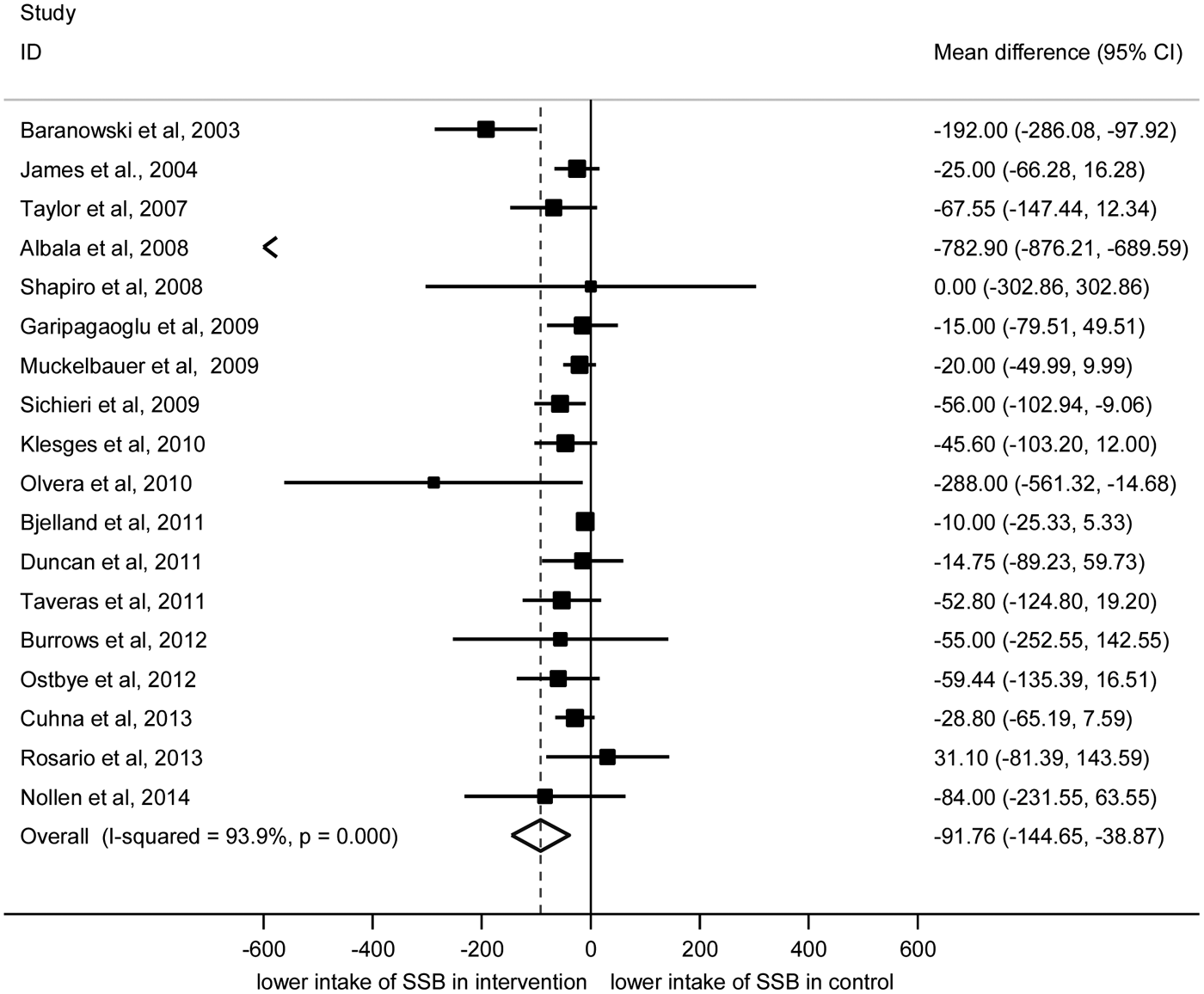Childhood obesity stands as a priority within public health practice and government agendas worldwide(1). Nutrition action has been introduced to reduce sugar-sweetened beverage (SSB) intake, as it has been identified as a risk factor for unnecessary weight gain and other comorbidities(Reference Malik, Pan and Willett2, Reference Malik, Popkin and Bray3). Evidence of the effectiveness of public health interventions on this dietary behaviour across all populations -including children- remains limited. Consequently, a systematic review and meta-analysis was undertaken to synthesise findings from randomised, non-randomised and cluster randomised-controlled trials published between January 1990 and May 2014.
A pre-specified protocol was followed to perform a search strategy and appraise methodological quality of studies meeting inclusion criteria. Behaviour change techniques (BCTs) were identified and analysed in included studies using an established taxonomy(Reference Abraham and Michie4). Pooled mean differences between intervention and control groups on daily variations in consumption of SSBs were generated using a random-effects model.
Consumption of SSBs was decreased in intervention groups by 92 millilitres (ml) /day (95 % Confidence Interval (CI) −145 to −39 ml/day) (fig 1). Differences in water intake were available in six studies and pooled results indicated a significant increase of 80 ml/day (95 % CI: 6 to 155 ml/day) in intervention groups when compared to controls. Evidence of heterogeneity was considerable for SSB (I2 = 94 %) and water outcomes (I2 = 79 %). Studies with delivery periods beyond 30 weeks appeared to yield better outcomes than those of shorter length. No individual BCTs were suggestive of greater positive effects, although the number of observations was insufficient to test this.

Fig. 1. Difference in intake of SSBs (millilitres/day) between intervention and control groups
Sugar-sweetened beverage consumption in children can potentially be curbed by public health interventions. Findings support the need of ongoing and enhanced initiatives targeting sweetened drinks as part of obesity prevention schemes.





